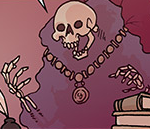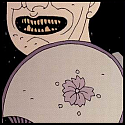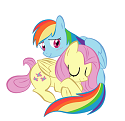|
DarkHorse posted:Alternatively, I can put together an effort post or even a thread if there's enough interest. I would find a good post/thread useful as a passive participant.
|
|
|
|

|
| # ? May 9, 2024 01:16 |
|
DarkHorse posted:I can send you an email, talk over IRC, IM, or Skype, or worst comes to worst talk you through it on MapTool. Just post the name of whatever means of communication you'd like me to contact you with. I'm usually in #ferg in SynIRC or on AIM at KoboldsAteMyBabe
|
|
|
JesustheDarkLord posted:I would find a good post/thread useful as a passive participant. I would as well, my group has used Skype+MapTools for dice rolling when players had to stay home and it seems like that might become more common so it'd be good to know more about it.
|
|
|
|
|
I'll put something together tonight in about six hours. There are a lot of things MapTool itself does, but I also want to go over different frameworks and how to use them.
|
|
|
|
I'm curious as to what some of you guys do when the party either decides or randomly happens to split. In my group the party that isn't currently active just goes away to play some Halo or chill out for a bit but I've heard stories that this sometimes causes ~drama~ in rpg groups. I'm curious as to why that happens and what, if you're in the position of GM, do you do about it?
|
|
|
|
Fox of Stone posted:I'm curious as to what some of you guys do when the party either decides or randomly happens to split. In my group the party that isn't currently active just goes away to play some Halo or chill out for a bit but I've heard stories that this sometimes causes ~drama~ in rpg groups. I'm curious as to why that happens and what, if you're in the position of GM, do you do about it? Wait, there's 2 parties or 1? If there are people aren't paying attention and just walk away, I either skip them(combat), have them do something dumb, or have them miss an important plot piece because their character was picking their rear end.
|
|
|
|
The MapTool post, what tells you how to MapTool with your MapTool First, some links: http://rptools.net/ - home of MapTool and a few other RPG helper tools. Go to the Downloads tab if you want to get the program, not the page for MapTool itself. MapTool is supported for Windows and Mac, and either version can interact with the other. They can do this because... Java - MapTool and its associated RPG tools run using Java. You may need to update it for the program to run properly, even if it seems to work ok. Most issues I've had have been fixed by updating Java. RPTools Forums - THE place to go if you have questions about the program, have trouble running it, or want to get pre-made frameworks for different games. Specifically, there's the Networking FAQ if you have trouble connecting over the internet, Screencast Tutorials that show off features (it's a little outdated), and Frameworks for DnD 3.5, 4E, Shadowrun, and other games (explained later). Irfanview - best drat free lightweight image editing software I've found. I'll be using it for quickly making token portraits. MSPaint is poo poo and has poo poo compression algorithms, if I find out you've been using Paint to save GIFs and JPGs I'll come to your house and poo poo on your keyboard for using such a poo poo program. MapTool supports transparency and alpha channels, so transparent GIFs and PNGs display correctly. Use JPG if it has a lot of blending colors (like a photo) and PNG if it has a limited number of colors or areas of large, uniform color. GIF is best saved for animation, which is NOT supported in MapTool. You can also use more professional/powerful image editing software if you have access to it, like Photoshop or GIMP, but I've found they have their separate uses. Photoshop is great for making elaborate images, layering, transparency, alpha blending, etc. while Irfanview is best for fast conversion and resizing. Now, onto MapTool: Download the newest version of MapTool from the links above, save the .zip folder where you'll remember it, extract it, yadda yadda you're good with computers. If you have Java (and possibly .NET) installed you can just run the executable. Those of you with a predilection for fruity hardware are on your own. The first time you run it, you should see a window like this (unless you're a fruitcake, I'll get to you guys in a sec):  You will probably have different numbers in there. Max and Min Mem determine how much memory that the program can allocate while it runs. Setting them to the same value prevents your hard drive from fragmenting as the program grabs and releases memory for shifting demands. Stack is a little different. The Stack is roughly how many commands you can queue without the program making GBS threads itself or forgetting what it was doing. The default value of 2 is fine if you never use frameworks, and better-written ones require less space in the stack to run their macros. Macros are pre-written codes, often tied to buttons, that execute frequently needed commands like dice rolling, setting up initiative, even things as complex as setting/ending conditions or building a character sheet. I have a good computer, so I just set them relatively high and forget about it. If you're an apple user, things are a little trickier. You have to modify the values manually by adding flags to the command line, but it can be done. Networking and similar crap Be aware that if you're playing over the internet, you'll have to enable port-forwarding on your router/firewall. If you're using Windows you may also have to make an exception in Windows Firewall. If you're playing over a local network, things are much easier. Getting connected is probably the hardest part of MapTool, and is worthy of an entire thread on its own. The Networking FAQ is a good resource and primer on the subject of networking if you have trouble. Assuming that everything works well, starting a game is easy:  The following box will pop up, allowing you to set up the type of game and its settings. Username is obvious, as is the role pull-down (DM vs. a PC), and you can set passwords for both roles. If you use the RPTools.net alias the game will show up on a list of available games on RPTools, which makes connection for your players much easier in some cases. The other settings let you control the flavor of the game, such as whether players can control other PC's tokens (or NPCs'!) whether players can reveal Fog of War, whether vision is shared across the party, etc. The pulldown menu that says ONE_ONE_ONE describes how movement will work on the grid, i.e. diagonals take 1 square of movement like in 4E. ONE_TWO_ONE follows 3.5 rules I think (every other diagonal costs 2) and MANHATTAN makes diagonal movement cost the same as the equivalent vertical and horizontal only move. NO_DIAGONALS forces paths on horizontal and vertical only.  If you are using a Framework and want your players to be able to push the buttons, make sure "Players Receive Campaign Macros" is checked If you are using a Framework and want your players to be able to push the buttons, make sure "Players Receive Campaign Macros" is checked   Connecting for other players is much easier, especially if you have the RPTools alias checked. Go to File->Connect to server... and the following dialog box will appear:  Just select the name of the game you're playing in, enter the password (if there is one) and change the role if you're co-DMing or something. There are also tabs for LAN play over a local network (super easy, fast connection) and Direct if you want to just enter the IP of the host. Notice that the version is listed - it's obviously best if all the connecting computers are running the same version, Mac or PC. Features: MapTool has been designed so that it's easy to incorporate many different features based on what game you're playing. As such, MapTool doesn't support particular games directly, rather they provide a means of programming a wide variety of game rules into the same utility. These game rules can be gathered into campaigns, which are basically save files containing tokens (that function like minis), macros (groups of commands or code that can be executed with a button press), world settings (like states or conditions, how health bars etc. are displayed and function, how vision works) as well as the images like maps and backgrounds. Still, MapTool has a few default features that are very useful. It supports four layers for GMs which you can see in the screenshot above for "Grasslands" - they are the Token, Object, Hidden, and Background layers. Any image dragged onto the Token layer will automatically be sized to the grid and can be set to snap-to gridpoints. The Object and Background layers function similarly, except the Object layer will go above anything on the Background layer. the Hidden layer is never visible to players, only GMs. There are two additional background layers, too: under Map->Edit Map... the Background button will allow you to tile an image behind any items on the regular layers, and the Map button will allow you to import an image (but not resize it) superimposed on the Background image. For example, below you can see a grassy image tiled behind an image of an ice dragon lair. The Background image will tile infinitely while the image will be limited to its dimensions. Note too that you can select for a square grid or two orientations for a Hex grid, or no grid at all. Grids can be visible or hidden, and tokens can snap-to the grid or not. You also have the option to modify how much distance per grid square (5 for 3.5, 1 for 4E for example) how many pixels per square, and vision distance. These are also editable under Edit->Preferences or Edit->Campaign properties  After you make your map, you can start dragging in images onto the appropriate layers. Remember that images dragged onto the Token layer will be sized to the grid and possibly given token properties, while items dragged onto the other layers will show up at their native scale and can be resized, rotated, etc. To move around the map, use the mouse wheel to zoom in and out. Right-click and drag will move you around the map. Left clicking is reserved for selecting items. To select multiple items at once, use Shift+Click (instead of Ctrl+click). Below you can see our map and where I've dragged an image of a sphere onto the Token layer. You can resize the grid using Map->Adjust Grid so that the lines roughly correspond to the lines in the pre-made map. Scroll in and out to change the size (or enter numbers manually) and left-click drag to adjust the offset so everything lines up.  Use left-click and drag to move tokens around. If you want to save a waypoint, hit spacebar. Note that the program tracks how much movement you've taken thus far over the entire path, in this case 16 squares. The calculation will differ if you used ONE_TWO_ONE versus ONE_ONE_ONE.  Double-click on a token (or right-click->Edit...) to modify an individual token's properties. You can add notes to the players and hidden notes for yourself as the GM, change attributes, properties, etc. If you're using a framework it's very unlikely that you'll modify these directly, at risk of breaking the framework. The two most important tabs are the last two, Ownership and Config. Ownership controls who can control the token and move it around. Config handles things like token size (1 square, 2x2 squares, etc.) what kind of vision it has (10 squares worth in a circle, 5 squares worth in a square, an arc of 90 degrees in front of it), if the PCs can see it, and what pictures it has as a token and when it is hovered over. Things like sight/vision and other properties have to be set under Edit->Campaign preferences before you can set them on the token.  Inside the game, you can Impersonate various tokens and speak as them in the chat. Right-click->Impersonate means any text you enter in the chat will show up with the impersonated token next to them. You can roll dice using square brackets using usual terminology like [1d6], store variables like [Wisdom=4], or even concatenate them like [1d20+2d6+Wisdom]  Note that the 2d6 were rolled and added without showing you what the rolls are. There may be an option to allow you to hover over them and see the rolls (aka tooltips) but the quick and dirty way is to just do 1d6 + 1d6. Well that's all well and good, but IRC can do most of that and it isn't near as much a pain in the rear end, why should even I use this? MapTool does a lot more. Note the buttons in the top left - from left to right, they are tools for:
Selection/Distance are obvious, and show up as the blue buttons to the right of the greyed-out ones. Selection lets you select, Measure distance lets you drag between two points (or set waypoints) and measure different paths. Paint is a rudimentary painting system that supports line segments, freehand, boxes, circles, and text boxes. You can select a foreground and background color or have transparencies, and set different tool sizes and opacity levels. You can also select a "texture" and paint a tilable image, like gridded ground, background like gravel or dirt, or semi-transparent things like fog. You can of course paint on different layers to layer effects, and do things like snap-to-point for precision drawing. For this and any following "Painting"-like tools, Shift+tool will erase the area covered on the current layer. I recommend letting your players use Token and do all your painting on either Background or Object, depending on how permanent you want it to be The Area Templates tools are awesome, and something that would have been incredibly handy back in 3.5 - as you can see, there is support for squared-off circles, cones and lines as defined in 3.5 as well as Burst, Blast, and Wall templates from 4E. Each will allow you to set an origin square and then track how far you've extended the effect. Like with paint, you can set internal and border colors (or use textures) and vary opacity.  Now for one of the coolest built-in features for MapTool, the Fog of War. MapTool natively programs for line of sight and revealing of hidden areas of the map. Fog of War blacks out anything your players have not yet seen, which can then be progressively removed as they advance. For example, here you see the previous area where I've used the rectangle tool to select an area. When I release it from this...  It goes to this:  If I was one of the players, I would actually be seeing this (use Ctrl+Shift+P as a GM to activate this mode, or View->Show As Player):  As a GM, I can see everything, though parts are greyed out so I can tell what the players can see and what shows up as black to them. That's not even the coolest part, as the last tool will show. This last button contains tools to edit a Vision Blocking Layer. If you've set up your campaign file to have vision, this layer will block line of sight and restrict what PCs can see. For example, lets add some blocking to those columns:  If I double-click my token, go to the Config tab, and select the "Has Vision" checkbox with a pre-set vision from Campaign Preferences, we can see exactly what is visible to that token when we hover over it with the mouse.  Even better, if the token is selected, we can press Ctrl+I and have it reveal only the areas that its vision exposes.  If we then move the token, we can see that new areas are exposed, and then reveal them in turn!   Depending on settings you can have it done automatically as a token moves, allow the PCs to reveal themselves, or whatever. There's also the option to make it so that things not in the tokens current line of sight (besides background objects) are hidden. It's under Map->Vision and has options for Day/Night that are useful for things like Low-Light vision or dark vision and interact for the vision types you set up under Campaign Properties.  Note how the areas blocked by the VBL elements shows up dimmed. You can see the background, but any tokens in that area would not show up.  In fact, I think there's something hiding back there now! :O  Ok, that's a ton of loving work and I haven't even gone into frameworks yet. Hopefully I haven't been wasting people's time. If this would be more appropriate as its own thread, tell me and I'll move it over there.
|
|
|
|
Fox of Stone posted:I'm curious as to what some of you guys do when the party either decides or randomly happens to split. In my group the party that isn't currently active just goes away to play some Halo or chill out for a bit but I've heard stories that this sometimes causes ~drama~ in rpg groups. I'm curious as to why that happens and what, if you're in the position of GM, do you do about it? As both a player and as GM I usually just outright say "Splitting the party is just a pain in the rear end for everybody" and start trying to move things back together as soon as possible. Short splits are okay if everybody's doing something interesting so as each person goes in turn everybody is entertained I guess
|
|
|
|
Thanks for the MapTools intro, DarkHorse. I would love to hear about the frameworks and what those add to the program. What are campaign macros, and what kinds of things would you need to set up for the players to be able to "push buttons"? How much work is involved in doing all the initial set-up for a game like, for example, 4e D&D? I guess there wouldn't be a whole lot needed if all you do is basically use this as your map system and for rolling dice. I had imagined you needed to set up your characters, etc., in MapTools but I guess I was wrong, unless that's what the frameworks are for. I usually am able to play with my friends in person, but we do have a couple people who have moved away, and we might be able to get them together for games if we could do it online. On an unrelated note, I wanted to ask if anyone knows of a good NPC generator (or good list of tables even) for a fantasy game. I don't need stats or anything so it can be completely generic, I'm mostly just looking for little fun things like name, appearance, basic personality, quirky behaviors, etc. Just stuff so when my players meet some random dude I can have something interesting available on the fly. sighnoceros fucked around with this message at 05:45 on May 26, 2011 |
|
|
|
Something like this maybe? The site has a lot more, maybe you'll find something that fits your needs.
|
|
|
|
I was going to sleep on this and consider it more, but gently caress it, I'm a sucker for praise. Frameworks and You: An interactive story Frameworks are what make MapTool really shine. MapTool itself is just a sandbox, a rough skeleton upon which the specific rules for a game can be built. Rather than hard-code how HP is handled, what states there can be, and how they're implemented, MapTool just allows a savvy programmer to code for them. Very savvy programmers can make it so the process is automated for its users. For this walkthrough, I will be using Rumble's 4E "Slim" Framework. Veggiesama's framework is another popular 4E framework, though I don't think he updates it anymore, and several others exist for Pathfinder & 3.5 as well as for Shadowrun, and I bet you can find some of the more popular games on the relevant forum on rptools.net - I will explain why I use Rumble's Slim version (and not the near-fully automated V5) later. First, to use a framework you must download and open its associated campaign file. This is standard stuff, just do File->Open campaign, and you should be able to figure it out. Make sure the framework and the version of MapTool you have are compatible - Rumble is good at listing his requirements, so make sure you have sufficient memory and stack. Once loaded, I highly recommend that you immediately save it as another file so you can go back to a clean slate at some point. You can then save and resave over this file with impunity and then still have a backup. When you first open it, you'll notice something like this:  Unfortunately, size requirements mean that everything is way more crowded than usual, but all the windows are in the same relative locations as when I actually play. You will obviously find a configuration that suits your play style, but I'm writing this thing. MY TUTORIAL, MY RULES! Docked on the left and set so that it auto-hides, I have Library, an eyeball, Initiative, and Connections. All of these are default MapTool windows and can be revealed or hidden by checking them off under the Window-> menu. Docked windows, like these are, will pop out if you hover the mouse over them. If you can't see a particular window, see if it is docked and hidden or buried somehow. Turning it off and on will usually make it reappear. The Library allows you to map particular folders so that they are read automatically and so you can drag elements into the game without opening Windows Explorer. It's especially helpful for commonly-used folders of images. The eyeball is the Map Explorer, which will list all the elements currently on the map. Initiative should be self-explanatory; default MapTool allows you to add tokens to initiative with a Right-click->Add to Initiative, but a framework will add even more functionality, as we'll see. Connections allows you to see what players are connected and boot them if their connection screws up (or if they start getting sassy). In the bottom right corner you can see the campaign window docked, but not hidden. Rumble's Slim framework adds several useful utilities that are handily accessible here. To the left of that is the Global menu, which has a few handy shortcuts to whisper connected players and such. Above that is the Selection window. Whenever a token is selected, any macros assigned to it will show up in this window.  You can see when I select a framework token it shows some random buttons, whereas if I select one of the example PC tokens, it looks more like buttons that have powers.  We don't want to mess with this current map or risk our players dicking around with it, so let's make it inaccessible to them and make a new map. Hit Ctrl+H to hide the map, or go to Map->Player Visible and uncheck it.  We'll have to give the players something to play on, so go to Map->New and go through the process of making a new map illustrated in my previous post. Once you're done, be sure that it's set to Player Visible otherwise the players will be stuck looking at a black screen. To switch between maps, click on the globe at the top right and select the appropriate map. GM's will see Player Invisible maps as hashed out, Players will of course see nothing at all until you allow them  Now we need tokens, both PCs and NPC/Monsters. Drag an image onto the field, making sure that the Token layer is currently selected. It doesn't have to be an image you intend to use, though that will of course simplify things. For this tutorial, I'll just grab a random image from my library folders:  I'm going to make this a new PC token, and with the help of Rumble it's as easy as going to the campaign window and finding the "Initialize Token" button.  Really, I prefer hitting F4 like the button says, but I wanted to show the things that Rumble added with his framework. When you hit the button/F4, a radio-button dialog asks you for NPC or PC. We're making a PC right now, so we'll select that.  Note that the formerly empty Selection window now has several buttons in it - the Initialize Token macro, activated by hitting F4 or that button, automatically configured the token to be a PC and gave it damage/healing buttons, means to make saves/checks, conditions, equipment, and a character sheet (the "quick sheet"). The quick sheet allows you to quickly reference a token's stats and make changes, as well as add powers. You can select powers to use from there as well, though it's usually quicker to select buttons from the Selection window. If you press the Quick Sheet button you should get another window to pop up. I've docked mine at the top and set to auto-hide, because it takes up a lot of room and tends to open itself at random otherwise. From the quick sheet you can Add Powers manually, which we'll get to eventually. You can also link several of the stats and modify them, as well as edit and equip different gear. However, a much quicker and more elegant way is to import characters directly from the offline character builder. In case you missed it, Wizards had an amazing (if a little glitchy) character builder that used XML info to build PCs. As part of it, you could have it paste out a text file that could then be imported into another person's character builder, or just saved as a .txt file and read off. Rumble used this feature to import characters immediately, saving stats, feats, and sometime powers with a few clicks. Sadly, Wizards decided to junk the offline builder for an online version almost universally considered inferior in just about every respect. Thankfully, Mustache Ride and a few other goons decided to update and maintain the old one, and it will still work if you ever downloaded the old CB and still have it. I did, so that's what I'll be using First, build your character normally using the CB. I've thrown together a fighter named Kurushi. Go to the Manage tab, select "Summary", and then select "Copy to Clipboard:  Go back to MapTool and, under the Campaign window, select the Import Summary button (or press F5)  Paste the copied summary into the window that pops up, then press Save (note that you can also import from the summary sheet PDF)  Notice that my token is now named after the character profile I imported. Also, if I hover over the token...  ...it appears his stats have been imported too, along with his Basic attacks and Second Wind powers! A quick check of the quick sheet confirms the profile imported successfully.  However, we're still missing most of his powers, and there are a few other things we ought to check. With the new Kurushi token selected, press F11 to bring up his stats:  From here you can modify attributes, defenses, skills, HP, and other traits directly by switching between tabs and modifying the values. I would recommend letting the importer do most of the work, however.  Vulnerabilities and resistances do not usually import properly. Additionally, modifying stats manually may not always update the token for some obscure reason! Vulnerabilities and resistances do not usually import properly. Additionally, modifying stats manually may not always update the token for some obscure reason!  It's best to double-check them manually like this, because it WILL have an effect when monsters attack with particular damage types. Once you're done with that, exit and let's work on importing Powers. Press the F6 key (have you noticed a trend yet? F4->F5->F6) to bring up the Import Power dialog.  Like the character summary importer, this one will interpret either a character builder PDF or the appropriate power from D&D insider. Rumble's framework is AMAZING if you have an Insider account, because you can import monsters from the Compendium just like we imported characters (which I'll demonstrate later). I almost gave up because of the fiasco with the online builder, but Rumble + Compendium is just too good to give up. Anyway, if you copy from the PDF, check the box that says you copied from the PDF; if you've copied from Insider, leave it unchecked. Generally I've had better luck with Insider, though things get weird once the MM3 format and Essentials-style are thrown into the mix.  MAKE ABSOLUTELY GODDAMN SURE YOU CHECK ALL THE RIGHT BOXES MAKE ABSOLUTELY GODDAMN SURE YOU CHECK ALL THE RIGHT BOXES  If you mess up you can still fix it later, but it sorta defeats the purpose of a quick importer. I'm going to be importing Brash Strike from the compendium by highlighting, copying and pasting.   Brash Strike acts differently if you have an axe, hammer, or mace, so we'll check Weapon Specific effects. It also has an Effect line, so we'll check that too. The radio button is for the Main Hand weapon, because this is likely going to be a power used with the main weapon/implement. Obviously you'd select Holy Symbol for channeled powers, or N/A for something that doesn't have the Weapon or Implement keywords. Click Save and close the window, and admire your shiny new Power button. Hovering over it will display a tooltip summarizing the power (cut off here because it extended beyond the window border)  We're not done with our PC, but let's make a monster to test it out against. We'll follow the steps we used previously: 1)Drag image onto Token layer, and 2)Press F4 to initialize it. However, this time we'll be importing a monster, so select NPC instead. Once you've done that, press F9 (instead of F5) to go to the monster import dialog.  You can see I've already pasted the info in; I chose the Mithredain Guard essentially at random. The checkbox at the bottom is for MM3 format monsters, which have a slightly different font and layout to the older style. The Mithredain Guard is in the old style, so I'm leaving it unchecked. After you hit save, the macro will attempt to parse the text, and you have the option of trying to parse the powers at the same time. In my experience, the importer gets about 60-75% of it right, which is still a huge time saver, so I recommend going for Powers and Stats in most circumstances. Next, it will show a list with the powers it successfully interpreted. CHECK EACH BOX FOR POWERS THAT DO NOT HAVE ATTACKS, otherwise your powers will act weird and not work right. In this case, Fey Step is not an attack, so it gets a check.  Much like our PC, stats HP defenses have all been imported. Note, though, that the blue button (a recharge power) does not have recharge values listed. Looks like we'll have to fix those eventually.  Also, do you see in the chat window where Mithredain Guard shows up? That's one of the downsides to this framework - it's impossible to my knowledge to import monsters without anyone connected knowing it, so it's hard to improvise on the fly without everyone catching on to your plan. I sometimes have to endure Still, we have a monster now for our hero PC to take a swing at! Select the PC, select Brash Strike, and observe the power window that appears.  We have a list of options, including multiple attacks, adding situational attack and damage bonuses, modifying crit range, and so on. The real magic comes when we select our new monster token as a target. With the power window still active, left-click on the monster (you may have to Right-click drag to pan into view, or scroll in and out to zoom)  The target appears in the window, along with its own boxes for Combat Advantage and bonuses to attack and damage! You can select multiple monsters this way for area of effect powers by using Shift+Left-click (instead of Ctrl-click like any sane program) and modify the attacks for each separately. This has a way of consuming memory and stack, so if things stop working for you with multiple targets, you may have to up your starting settings. Click Attack and the results will pop up in the chat window. Note that you can hover over any of the numbers and the tooltips will display the breakdown of your bonuses.  Interestingly, the macros will automatically compare attacks versus defense, so if you don't play your game that way it might cause issues. If the attack is not high enough, the Hit line is not displayed, damage is replaced by a Miss (hover to see what half damage would be), and it will display a Miss: line, if applicable. Also, see that blue GM Notes text? There are boxes you can fill out to give yourself reminders that the regular players won't see. It looks a little junky to you, but why would you care? Ok, that's enough for now. Next time I'll go into manually modifying powers, adding weapons and equipment, changing tokens so they're not just blue balls (:iamafag:), and maybe get into the awesomeness of states, conditions, and applying them
|
|
|
|
So basically MapTools is the mythical Game Table that Wizards has been failing to create since 4e came out.
|
|
|
|
Huh, that's actually really useful DarkHorse. I guess its time I tried that PbP campaign I was meaning to do
|
|
|
|
gos_jim posted:So basically MapTools is the mythical Game Table that Wizards has been failing to create since 4e came out. Don't think too highly of it. As evidenced by the incredibly long explanatory posts, Maptool is incredibly user-unfriendly.
|
|
|
|
If nothing else, it looks like it could be useful just to have maps and tokens on a grid for people to see online. Plus a built-in diceroller. And setting that much up doesn't look like it would be too much trouble. Also interested in how it handles vision. Can you set up light sources so the PCs can only see out a certain distance? Light is something I've always sort of hand-waved in my games simply because of the difficulty of tracking it on a physical mat, removing guys if they go out of view, etc. Does anyone have any tips/tricks for handling that at a table?
|
|
|
|
CDOR Gemini posted:Don't think too highly of it. As evidenced by the incredibly long explanatory posts, Maptool is incredibly user-unfriendly. I'm getting that impression. How hard is it to use just for a forum play-by-post game, though, where all I need is a way to import a background image, track movement (and maybe health?), and export a current grid? Or is there a far better way of doing that?
|
|
|
|
I can't speak for a better way, but it would absolutely work for that, right out of the box. My first post should cover you pretty well, but aske any questions you might have.  Yes, you can set up tokens so that they emit light (like characters with a torch or sun rod, or a static brazier) or have them hidden so they emit light diffusing through an area without showing the source. A character could have sight 40, but only see 5 squares in darkness, but have a torch 40 squares away that lights up 10. On that case (assuming the fog of war was revealed previously) the first five squares would be shown, it would be dim from 6 to 30, and then the last ten would be exposed. Another token could hide in the space between and not show up until something with a light source went by. And CDOR Gemini, I wouldn't say it's user unfriendly, it just has a steep learning curve for all the most useful features. It might not be pick up and play, but it simplifies a ton of things, especially importing characters and monsters. I think VERY highly of it, and it's pretty intuitive once you've fooled around for a bit. It looks long and difficult typed up like that, but it takes me literally five minutes to import a character/monster, and they're ready to go with ALL their powers doing all the math a a push of the button. Its great for high-level campaigns. Really, it can be as simple or complex as you need it to be. DarkHorse fucked around with this message at 16:05 on May 26, 2011 |
|
|
|
DarkHorse: can you put all of that in a new thread, dedicated to MapTools?
|
|
|
|
Iron Squid posted:DarkHorse: can you put all of that in a new thread, dedicated to MapTools? I've made a new thread here and added a new post on editing powers.
|
|
|
DarkHorse posted:Sorry if I inadvertently poo poo up this thread I don't think it's "making GBS threads up the thread", I think it's more that this is really useful information and it's better to be able to find it quickly in its own thread than going through all of this one to find it. 
|
|
|
|
|
substance1987 posted:I don't think it's "making GBS threads up the thread", I think it's more that this is really useful information and it's better to be able to find it quickly in its own thread than going through all of this one to find it. This. Thanks for the post, it's great.
|
|
|
|
DarkHorse posted:Sorry if I inadvertently poo poo up this thread You didn't poo poo up this thread at all. You just made a really great post and I'd hate for it to get lost, when it should be shining in a thread all of its own!
|
|
|
|
What do you use for map making? I've been searching for a while and all I could come up with that was simple and easy to use and that would print a grid in the correct scale was http://www.yeoldemapmaker.com/. But, it does lack a lot of options (like importing your own objects), and limits the amount of objects you can put in a map, and other silly things. Anyone know any other program that's as simple to use but has a little bit more options?
|
|
|
|
I haven't tried it but I hear good things about http://pymapper.com/
|
|
|
|
Yawgmoth posted:I haven't tried it but I hear good things about http://pymapper.com/ Thanks. It's a little bit more complicated than what I was looking for, and it lacks some features, but nothing some patience and GIMP cannot fix.
|
|
|
|
Looking for some ideas, as my players are hyped up to play Saturday (they want a marathon session because it's been a while since we've played... great...) and I haven't had a chance to flesh out the campaign/adventure fully yet. So two questions: 1. Does anyone have any cool festival/tavern games that could be played in game? I'm thinking things like various contests or games of chance that could interest the players. I want to have a festival so the players have fun in the town they start out in and get attached to some of the NPCs. Feats of strength/agility are easy, with like arm wrestling or races or an obstacle course or whatever, but interesting ideas for those would be great too. I'm mostly looking for ways to include the non-physically oriented characters. 2. I want the PCs to get attached to the town because I intend to damage it in some way. The campaign is centered around rebellion against an evil tyrant ruler of the kingdom they're in. I'm trying to come up with a reason for him to have ordered the village (which is a small frontier village close to the border of a rival, but not HATED ENEMY, nation) destroyed, or a reason for him to "teach them a lesson". I really want them to hate this guy. I haven't fleshed out all of his motivations so any ideas are appreciated. Edit: To clarify this is D&D 4e sighnoceros fucked around with this message at 15:57 on Jun 9, 2011 |
|
|
|
gos_jim posted:1. Does anyone have any cool festival/tavern games that could be played in game? I'm thinking things like various contests or games of chance that could interest the players. I want to have a festival so the players have fun in the town they start out in and get attached to some of the NPCs. Feats of strength/agility are easy, with like arm wrestling or races or an obstacle course or whatever, but interesting ideas for those would be great too. I'm mostly looking for ways to include the non-physically oriented characters. Drinking contests, greased-pig lassoing, jousting, archery, a roast of town officials with judges & prizes for the best burns, cantrip contests gussied up as an EPIC MAGE DUEL, maybe some kind of cookoff? quote:2. I want the PCs to get attached to the town because I intend to damage it in some way. The campaign is centered around rebellion against an evil tyrant ruler of the kingdom they're in. I'm trying to come up with a reason for him to have ordered the village (which is a small frontier village close to the border of a rival, but not HATED ENEMY, nation) destroyed, or a reason for him to "teach them a lesson". I really want them to hate this guy. I haven't fleshed out all of his motivations so any ideas are appreciated. Town is sited on a valuable vein of McGuffinite, tyrant's super-paranoid about rebels that don't actually exist, religious fanaticism, his favorite horse told him to
|
|
|
|
gos_jim posted:1. Does anyone have any cool festival/tavern games that could be played in game? I'm thinking things like various contests or games of chance that could interest the players. I want to have a festival so the players have fun in the town they start out in and get attached to some of the NPCs. Feats of strength/agility are easy, with like arm wrestling or races or an obstacle course or whatever, but interesting ideas for those would be great too. I'm mostly looking for ways to include the non-physically oriented characters. You could make your PCs play RL things like three-card monte or dice--games that are quick, easy to play, and also visually engaging for everyone else. You can pull an Arcanum and have random tavern patrons willing to engage in trivia competitions with the PCs, where the patron will offer the PC a sum of money if they can answer a series of questions correctly. You could make up a storytelling competition if there's a bard in the group--make it like Iron Chef where there's a story "ingredient" like betrayal or unrequited love or a theme like "things fall apart" that must be present in the story to qualify. You can play this one out by periodically describing the crowd's reaction to his story to let him know whether or not it's going over well. You could have your wizards engage in that age-old wizard duel where they turn into different kinds of animals in an attempt to best each other (I turn into a wolf, you turn into an elephant, I turn into a mouse, you turn into smallpox or some poo poo). Obviously this would have to be non-lethal. You could set up some puzzles for your rogue types, like supposedly unopenable containers that can be opened with cunning and patience. gos_jim posted:2. I want the PCs to get attached to the town because I intend to damage it in some way. The campaign is centered around rebellion against an evil tyrant ruler of the kingdom they're in. I'm trying to come up with a reason for him to have ordered the village (which is a small frontier village close to the border of a rival, but not HATED ENEMY, nation) destroyed, or a reason for him to "teach them a lesson". I really want them to hate this guy. I haven't fleshed out all of his motivations so any ideas are appreciated. If he's your generic bad guy, then it could be over something as simple as taxation. Maybe the village didn't produce enough in the harvests, or their merchants haven't sold enough, and this is like the tenth time in a row and the evil tyrant would rather make an example of them than have them continue to drain his economy. If you wanted to go a little more subtle, then maybe there's a faction of people opposed to the tyrant who operate within his kingdom. Maybe they're spreading seditious literature and opinions. Maybe the evil tyrant suspects they're currently holed up in the small village and he's taking a "kill them all and let god sort it out approach." You can easily work that in your favour because if the village really IS innocent (maybe there are no rebels there, or the rebels are there but the PCs sympathize with their cause) then the PCs are going to be pissed when it gets razed. It doesn't have to be politically motivated either--there could be a rival religion or instead of rebels maybe they're refugees and the tyrant doesn't want to deal with them. He'd rather kill everyone in the village to make sure they're dead than risk a diplomatic incident because he was providing them with asylum. You could even have it so that the town is chafing under the tyrant's rule, and some of the more disgruntled citizens are openly talking of revolt. Let the PCs hear this, and then decide how to react. They could help the townsfolk by teaching them to fight, but this will only hasten the destruction of the town. They could ignore the townsfolk, but be sure to make them feel bad about this once the town is destroyed. Adding more agency to the PC's part in all this should help to solidify their feelings about the town. Astfgl fucked around with this message at 16:34 on Jun 9, 2011 |
|
|
|
gos_jim posted:1. Does anyone have any cool festival/tavern games that could be played in game? I'm thinking things like various contests or games of chance that could interest the players. I want to have a festival so the players have fun in the town they start out in and get attached to some of the NPCs. Feats of strength/agility are easy, with like arm wrestling or races or an obstacle course or whatever, but interesting ideas for those would be great too. I'm mostly looking for ways to include the non-physically oriented characters. Maybe a tall-tale-telling competition, where PCs have to come up with ludicrous but slightly believable stories? Or something where you must shower the opposition with praise until they become embarrassed and give up (sort of like a reverse rap battle), that could be pretty funny. A limerick or joke competition (must be themed to your campaign world), maybe even where the players themselves have to create something passable rather than just rolling? Edit: A debate on some arcane fantasy related topic, perhaps on the ethics of creating magical creatures, or on the moral responsibilities a wizard has towards intelligent summoned creatures? That wouldn't work for everyone, sure, but I have at least one player who'd probably be into roleplaying it. If not you could always play it as a skill challenge. gos_jim posted:2. I want the PCs to get attached to the town because I intend to damage it in some way. The campaign is centered around rebellion against an evil tyrant ruler of the kingdom they're in. I'm trying to come up with a reason for him to have ordered the village (which is a small frontier village close to the border of a rival, but not HATED ENEMY, nation) destroyed, or a reason for him to "teach them a lesson". I really want them to hate this guy. I haven't fleshed out all of his motivations so any ideas are appreciated. If the PCs have a lot of fun at the festival, they're likely to make friends with the locals, which should give them enough motivation to save the town / be pissed at the Tyrant for loving it up (I mean, beyond the "we're heroes and he's evil" thing). The blacksmith likes the party fighter (first guy to beat him in arm wrestles for years!) The serving girls were entertained by the mage's antics and want him to perform again, the Hunter's Guild wants the ranger character to do a seminar for them on archery after he beats them all in the contest, whatever else you can think of. A major minion of the Evil Tyrant has fallen in lust with the Mayor's daughter, and proposed marriage (by talking to the Mayor, not the daughter). The Mayor has said "gently caress no" and the Minion is pissed and has falsely accused the town council of treason. The Mayor's daughter could beg the PCs for help because her dad is too proud to ask them (which might make them like him a lot, especially if plot-NPCs are always going "please sirs, you're our only hope!"). The town is sitting on top of a dungeon or cave system that contains the Holy McGuffin Of Smiting Evil Tyrants (yes, this is the oldschool option for sure). The town is right in the path of the army (who are on their way to fight someone else), and instead of the Tyrant intentionally loving everone over, the passing army "scavenges" all the town's food supply to feed itself. They don't raid the granaries or anything, but they do eat all the livestock and crops. Maybe some soldiers push some locals around or something too. The town is blighted by an illness or crop sickness or mysterious cattle deaths that turns out to be the Tyrant's Chief Wizard testing out some biological warfare thingy (magical or otherwise). Edit: Combine them all! The Army is transporting the experimental bio-weapon and pillaging the food supply when they gently caress it all up and infect the village. The Chief Wizard is "in love" with the Mayor's daughter but is only doing it to get close to the Mayor who has the map to the dungeon which holds the McGuffin. In the meantime, the General of the army is actuall in love with the Mayor's daughter and can be turned against the Wizard if his plans are revealed! The Mayor's daughter is secretly working for the opposing kingdom and has brewed a love potion to get the Wizard and the General to fight each other which will undermine the Tyrant's power. Edit Edit: Also, the town council have been partially replaced by impostors/dopplegangers hired by the Tyrant to undermine the plans of the Mayor (who the Tyrant thinks is the enemy agent but it's actually his daughter), because the Tyrant needs the McGuffin destroyed. But I'm getting ahead of myself here  Edit x 3: General gets pissed off that the tyrant would want to destroy his One True Love's family, and turns against the Tyrant at the last minute, but the Evil Kingdom has been weakened so much that the Tyrant has actually abdicated and gone into exile. The General takes over with the Mayor's Daughter as his "future queen", but she sells him out to Rival Kingdom, who invades over the border and makes life worse for everyone. A hero is stabbed in the back for no reason and dies. The Festival Organiser (who's only ever appeared in the first session, and not in a speaking role) turns out to have been a disguised Gold Dragon all along and saves the day or something, gently caress if I know at this point. Elector_Nerdlingen fucked around with this message at 17:16 on Jun 9, 2011 |
|
|
|
Does anyone have any good ideas for running a courtroom trial in D&D 4e? I'm leading up to a fairly big scene where the players have to defend/testify for a major NPC, Baron Graeber. Two of the players are slaves in the employ of the Baron, but they all have some stake in having the Baron go free. I'll make another post later about the plot and background surrounding this trial if anyone's interested in specifics. As far as system goes, I looked up trial procedures for the appropriate time period (this is taking place in 1450s Europe) and came up with the following: - Drawing of the jury -- Lottery style, each party has a right to object to a certain extent to the persons drawn. --- Each jury member has a brief (<5 word) description of their occupation and personality, as well as a bonus/penalty to their verdict roll based on certain traits/circumstances. e.g., one is particularly greedy, and if the characters manage to run into him outside of the court and successfully bribe him (200, 100 on a successful Diplomacy roll) they can buy his acquittal vote. However, if they approach him and he brings up the bribe, and they outright refuse, his vote will be at a -15 penalty. --- Four of the initial 12 members are bought off for an automatic vote of Condemn --- Up to four of the initial 12 may be objected to and replaced by another person. The idea is that the players can, by chance or by careful thought, eliminate at least a couple of the bought jurors to increase their chances of success. - Reading of charges - Accuser(s)’ pleadings are heard (opening statements) - Accused’s pleadings heard (opening statements) - Alternating statements: -- Accuser -- Accused -- Accuser -- Accused - Witnesses called by accuser -- Cross-X by accused - Witnesses called by accused -- Cross-X by accuser - Closing statements, accused - Closing statements, accuser - Praetor distributes tablets to jury - Collection of tablets, majority needed for judgment - Judgment & ruling For the juror's votes, I'm rolling a d100 and applying total bonuses/penalties accumulated through the trial. 01-50: Condemno 51-65: N.L. (non liquet) 66-00: Absolvo Evidence produced by either side will similarly have a bonus/penalty value, based on how much they help/hurt the Baron's case. The back-and-forth statements/debate section I'll score at my discretion on how well they convince me of their respective sides. (I may bring in a one-time player to be the accuser for the trial so I can be the judge instead of both judge AND accuser). Any thoughts on the system? Anyone need more context?
|
|
|
|
gos_jim posted:The important thing here is whether your players can improvise on their feet or not. Can they (or some of them) be given the phrase "brother and sister go adventuring" and spin a long story out of it? Basically, can they bullshit on command? Because if they can, you've got a huge range of things you can do to put everyone in the spotlight. Why not have you and the fighter take turns describing a wrestling contest? "Alright, the challenger wins initiative, so he reaches out and gets a firm hold on your right forearm." (Note: if he did this in a match that was watched earlier and it resulted in a throw, this is even better). "Okay, I think he's going to try to throw me, so can I grab the wrist that's grabbing me *and* shift my weight to my back foot?" "Your Dex is over 13, right? Yeah, you can do that. Alright, he takes a step forwards, locking his ankle around yours." "O...kay. I'm going to shove forwards with my free hand *and* the hand that's grasping his wrist." That kind of thing. Have the opponent lose after a dozen passes or five minutes real time (or if the player comes up with some ultra-convincing move). Or, like Astfgl said, have the wizard get into a a debate over Arcana. Give each of your players a chance to BS about something their characters would be good at. The cleric could debate religion with another member of their order (or a different order if you want things to get prickly). Barring that, there's always straight-up skill challenges. Drinking competitions, hide-and-seek or a treasure hunt, archery competitions, magic shows for the kiddies (even the rogue could pull Sleight of Hand tricks), and of course touring the sights, sounds, and smells of the fair. Have them get into discussions with the townsfolk. This will especially help them get attached to the place as the people that live there will begin to seem like more fully fleshed-out characters. The reason for the attack is unimportant. If you can get your players emotionally invested in the place, you'll have them pissed that the BBEG even came near. Try having some kind of building materials be the subject of a quest. Like a certain kind of symbolic tree that only grows deep in the forest is needed as the new roofbeam for the new Town Hall. The characters have to go into the forest, fight their way to the tree, bargain for it to be chopped down, and haul the thing back through a thunderstorm that triggers landslides which almost (but not quite) wash the tree away into the river valley so far below. And when they finally get it back, have them help with the construction in their own unique ways. When it's finally constructed, name it after the team. "C'mon, let's go sit in on the Council meeting in Avengers Hall" or something. And have the characters be lauded as heroes. Then, when the baddie attacks, torch that bitch. They'll be frothing at the mouth.
|
|
|
|
Son of Thunderbeast posted:Does anyone have any good ideas for running a courtroom trial in D&D 4e? Use the system in Chrono Trigger, that trial owned. Otherwise that all sounds interesting but has literally nothing to do with 4e in particular, which isn't an inherently bad thing. It'll all depend on how comfortable your players are with it. It does sound pretty mechanical, perhaps overly so (Okay, great! Now everyone break for 10 minutes while I roll die and see if he's guilty or not), but that all depends on how complex you want to make the court case.
|
|
|
|
The correct answer for 4E courtroom scenarios is always "Trial by Combat," with cheating by involved parties -- skill challenge for everyone who isn't one of the chosen champions, with results of the skill tests giving bonuses/penalties to the combatants. Have a presentation of evidence/witnesses phase, by all means -- the original meaning of Trial by Combat was to give the supernatural a chance to mess in the fight, so have the results of the trial set the baseline bonuses/penalties that the fight starts with.
|
|
|
|
I considered trial by combat, but there's been a huge spate of combat encounters recently, so their experiences in the city are geared more towards roleplay. Plus, this group's very RP-centric as far as preferences go. I chose a jury trial because I feel it could end up being more fun and entertaining for them. Each character's going to get at least one turn in the spotlight (whether cross-examining, or making statements, or testifying, etc.) It's going to be entertaining for sure, I just wanna make sure the system works decently enough (balanced between streamlined and enough mechanics that their actions have a noticeable difference) to make it as fun as possible. The characters I think will shine the best are: Cur - Goliath barbarian. Most potential for entertaining scenes in the trial, since he has no comprehension of what this procedure is or what's probably expected of him. Tochtli - Tiefling warlord. The "straight man" of the group, will probably fill the role of the actual advocate nicely (making the pointed arguments, etc) Sebastian - Agent Retriever of the Catholic Church, and pointedly not-pious. This guy wheels and deals like no other. Basically this guy in a priest's collar. But yeah, I'm trying to come up with a way of making this trial work so the most fun is had by all. Also, the best part is, whether the verdict is guilty or innocent (or move for retrial), I've got good ideas for where to take the story for each case.
|
|
|
|
I've got a question for the GMs out there, since I'm curious about you guys' opinions on computers at the table. When I go back to my school in fall, I'm going to be running a campaign for most or all of the school year, which I'm very excited about; the only issue is that my group tends to bring their laptops to the table. Some of them have their character sheets on their PCs, but I often end up feeling like they're just surfing the internet in between their turns instead of actually paying attention to the session. Do you guys feel that having your laptop at the table is rude, or am I just being oversensitive?
|
|
|
|
Pinball posted:I've got a question for the GMs out there, since I'm curious about you guys' opinions on computers at the table. When I go back to my school in fall, I'm going to be running a campaign for most or all of the school year, which I'm very excited about; the only issue is that my group tends to bring their laptops to the table. Some of them have their character sheets on their PCs, but I often end up feeling like they're just surfing the internet in between their turns instead of actually paying attention to the session. Do you guys feel that having your laptop at the table is rude, or am I just being oversensitive? If they're actually using it for character information and that's actually faster than paper, it's good. Unlikely, but not impossible. If it's taking people out of the flow and being a huge distraction, then it's bad. Ask them to cut that out.
|
|
|
|
Have a talk and discuss what you all expect from your games. If you agree that you want a more immersive, focused game, turn off your router or ask them to turn off wireless (if they can't be trusted not to surf at the table). If people just want to screw around, have a game where you all screw around. Personally, I don't think you're out of line at all. I hate when people are not mentally present except on their turn (and usually it takes a while for them to catch up, slowing everybody down). Our group had a combination of adult discussion and added penalties for delaying play without reason.
|
|
|
|
My D&D group uses laptops so we can reference the many many source books. If your game isn't reference heavy the laptops probably aren't required.
|
|
|
|
If its a Pathfinder game theres some merit in the PFRD access. It's pretty well organized, and makes grabbing spells/monsters from a dozen books actually humane.
|
|
|
|

|
| # ? May 9, 2024 01:16 |
|
Pinball posted:I've got a question for the GMs out there, since I'm curious about you guys' opinions on computers at the table. When I go back to my school in fall, I'm going to be running a campaign for most or all of the school year, which I'm very excited about; the only issue is that my group tends to bring their laptops to the table. Some of them have their character sheets on their PCs, but I often end up feeling like they're just surfing the internet in between their turns instead of actually paying attention to the session. Do you guys feel that having your laptop at the table is rude, or am I just being oversensitive? I agree that you guys need to decide as a group if you want a really intensely focused game or more of a light and crunchy one and go from there. It's different if it's a game where people are expected to be in character and interacting with each other consistently than if it's a 'which villain do you punch next?' sort of deal. One former Shadowrun GM of mine went through a phase where he thought we weren't paying enough attention to backstory and briefing information so we had a couple of times where a contact gave us an important phone number or keypad combo or something. When it came time to use it if you hadn't been paying attention and said 'yeah, I call that number', he required that you be able to come up with the actual number, otherwise your character hadn't been paying attention either and you were screwed. It only took a couple of those disasters before we were all paying very close attention. Looking back on it it was kind of a passive aggressive way of dealing with it instead of just saying to the group that he spent time on this backstory and it would be nice if we paid some attention to it, but it did work!
|
|
|






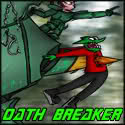





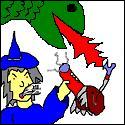
 GOONS ARE MEAN
GOONS ARE MEAN 











